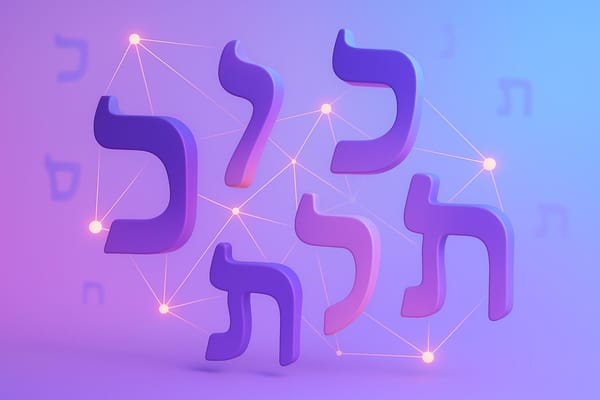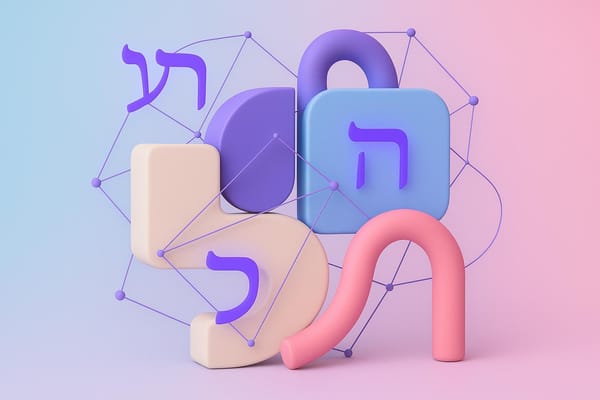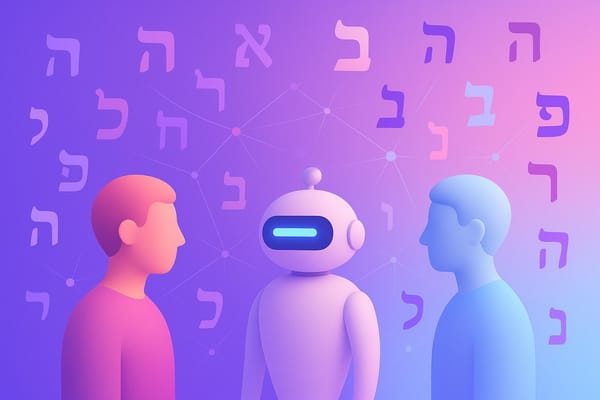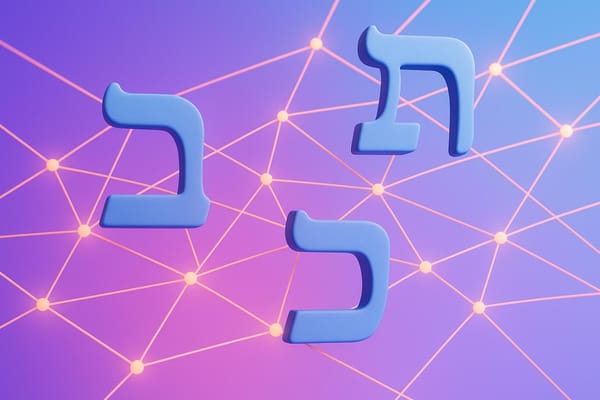How AI Translates Hebrew Emotions
Explore how AI navigates the complexities of translating Hebrew emotions, addressing gender, culture, and context for accurate communication.
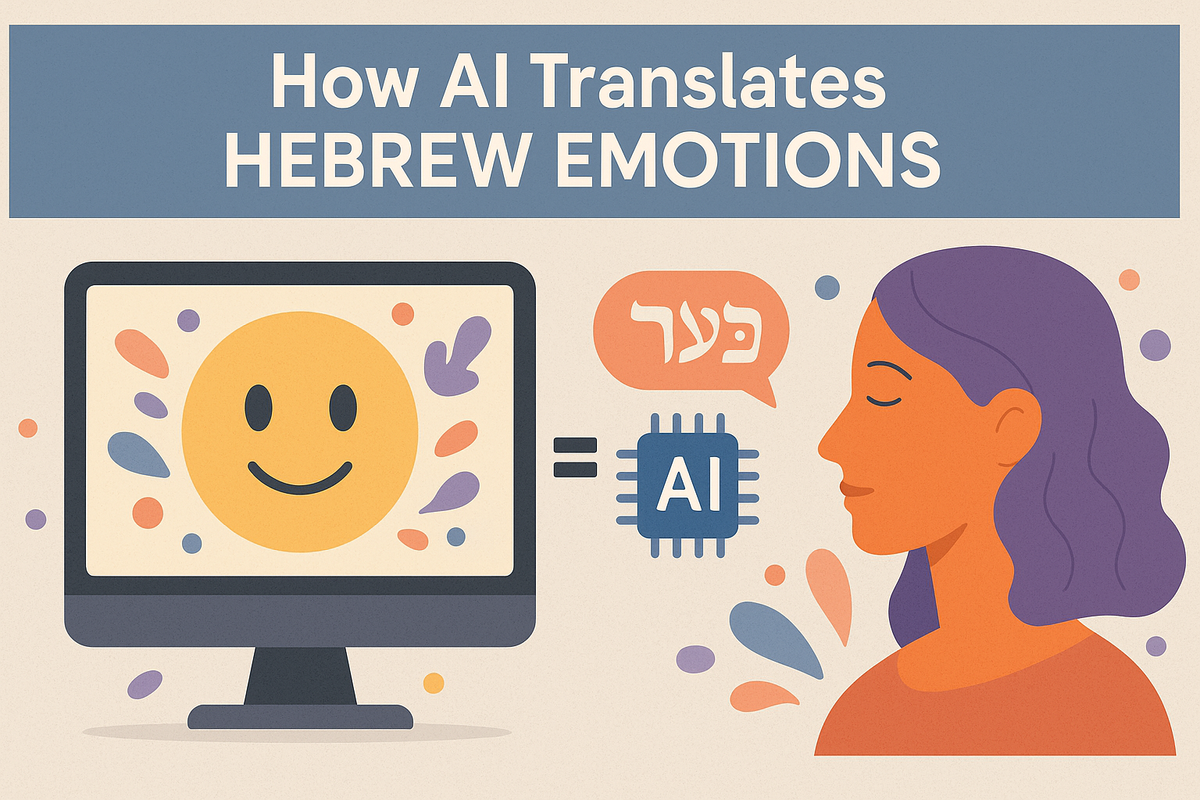
Translating emotions from Hebrew to English is complex due to gendered language, cultural expressions, and contextual nuances. Here's how AI tackles these challenges:
- Gender-Specific Language: Hebrew phrases like "I'm happy" differ based on the speaker's gender (ani sameach for males, ani smecha for females). AI adjusts translations to match these variations.
- Cultural Idioms: Expressions like "לעשות חיים" (literally "make life") mean "have a great time." AI must interpret such phrases beyond their literal meanings.
- Contextual Nuances: Emotional intensity and relationship dynamics influence translations. For example, "לב שבור" (broken heart) conveys deep sadness, not just the literal phrase.
- Advanced AI Tools: Using Natural Language Processing (NLP), AI identifies Hebrew roots, analyzes sentence structures, and interprets emotional context for accurate translations.
Modern tools like baba integrate gender detection, context awareness, and cultural subtleties to ensure translations feel natural and meaningful. The future of AI in Hebrew translation includes real-time updates, multimodal inputs, and enhanced cultural understanding.
[DEMO] From Hebrew to English: How AI Instantly Translates ...
Hebrew Emotion Basics
Hebrew grammar plays a big role in how emotions are expressed, which can make translation, especially for AI, a bit tricky. Grasping these basics is key to translating emotions accurately.
Gender and Number in Hebrew
In Hebrew, gender influences nearly every aspect of the language. Nouns, verbs, and adjectives all need to match the gender of both the speaker and the subject. This creates four possible variations for most emotional expressions:
| Speaker | Subject | Example (Happy) | Transliteration |
|---|---|---|---|
| Male | Male | אני שמח בשבילו | Ani same'ach bishvilo |
| Male | Female | אני שמח בשבילה | Ani same'ach bishvila |
| Female | Male | אני שמחה בשבילו | Ani sme'cha bishvilo |
| Female | Female | אני שמחה בשבילה | Ani sme'cha bishvila |
In plural forms, masculine is often the default, though modern Hebrew sometimes uses gender-neutral options. These details are essential for understanding how Hebrew handles emotions.
Hebrew Emotion Words
Hebrew emotion words reflect both linguistic and cultural depth. For example, the word nachat (נחת) captures a mix of pride and satisfaction, often used to describe the feeling parents have when their children succeed. English doesn’t have a single word that fully conveys this.
Here are some highlights of how Hebrew expresses emotions:
- Intensifying emotions: Repetition is a common way to emphasize feelings. For instance, tov tov (טוב טוב), which literally means "good good", conveys a stronger sense of "very good" or "really good."
- Blended emotions: Hebrew combines words to express layered feelings. Lev shavur (לב שבור), or "broken heart", goes beyond heartbreak to describe deep disappointment in various contexts.
The root system in Hebrew also allows for precise emotional expressions. Take the root ש-מ-ח (s-m-ch), which relates to happiness. From it, you get:
- שמחה (simcha) - happiness or joy
- משמח (mesame'ach) - bringing happiness to others
- לשמוח (lismo'ach) - to be happy or to rejoice
Understanding these nuances is essential for translating Hebrew emotions into English with accuracy.
Get on the waitlist for our mobile app at www.itsbaba.com
AI Translation Hurdles
Translating emotional expressions from Hebrew using AI comes with its own set of challenges. Let's dive into how cultural sayings and context create obstacles for AI translation.
Hebrew Sayings and Context
Hebrew idioms and emotional expressions often carry meanings that go far beyond their literal translations. For example, the phrase "לעשות חיים" (la'asot chaim) literally means "make life", but its actual meaning is closer to "have a great time" or "live it up." AI needs to interpret these phrases based on context, not just word-for-word translation.
Here are some examples of common challenges:
| Hebrew Expression | Literal Translation | Emotional Context | Translation Challenge |
|---|---|---|---|
| יצא לי הלב | My heart went out | Deep worry or concern | Recognizing metaphorical use |
| נמס לי הלב | My heart melted | Overwhelming affection | Adjusting to cultural intensity |
| על הפנים | On the face | Feeling terrible | Completely non-literal meaning |
| לא בא לי | Doesn't come to me | Lack of desire/motivation | Requires contextual understanding |
These idiomatic expressions highlight the difficulty of capturing emotional nuance in translation. But idioms aren't the only hurdle - gendered language adds another layer of complexity.
Gender Rules in Translation
Hebrew's gendered structure means AI must also pay attention to who is speaking and who is being addressed. Properly translating emotions requires tracking gender for verbs and adjectives.
- Speaker and recipient gender: AI needs to adjust verbs and adjectives based on whether the speaker or recipient is male, female, or part of a mixed group.
- Group dynamics: When translating for groups, gender impacts the phrasing. For example, "אנחנו שמחים" (anachnu smechim) is used for a mixed or all-male group, while "אנחנו שמחות" (anachnu smechot) applies to an all-female group.
In group conversations, maintaining these distinctions ensures the translation feels natural and accurate while preserving the emotional tone.
Get on the waitlist for our mobile app at www.itsbaba.com
AI Systems for Hebrew Translation
Modern AI systems tackle the complexities of translating Hebrew emotions by diving deeper than simple word-for-word translation. They work to grasp cultural context and emotional subtleties, making translations more accurate and meaningful.
NLP for Emotion Detection
Natural Language Processing (NLP) plays a key role in identifying emotions within Hebrew text. These systems break down text into layers for analysis, focusing on individual words, their relationships, and the overall emotional tone. Here's how it works:
- Morphological analysis: Identifies Hebrew roots and modifiers to understand word meanings.
- Syntactic parsing: Examines sentence structure to determine emotional emphasis.
- Semantic analysis: Interprets emotional meaning based on context.
For instance, when the AI processes the phrase "לב שבור" (broken heart), it doesn't just translate the words. It also recognizes the phrase as an emotional marker for deep sadness.
| Analysis Level | Function | Example Processing |
|---|---|---|
| Morphological | Identifies root words | שמח (s-m-ch) root, linked to happiness |
| Syntactic | Analyzes sentence structure | Understands how word order affects meaning |
| Semantic | Interprets contextual meaning | Differentiates literal vs. metaphorical usage |
AI Learning Methods
AI systems rely on advanced training methods to understand Hebrew context and emotional depth. Two key approaches include:
Deep Learning Networks
- Process parallel texts in Hebrew and English to find emotional equivalents.
- Learn how emotions are expressed differently across languages.
- Adjust translations based on specific contexts.
Pattern Recognition
- Detects frequently used emotional expressions.
- Maps intensifiers unique to Hebrew.
- Incorporates cultural markers to refine emotional understanding.
Through exposure to diverse Hebrew texts, conversations, and cultural references, these AI systems continuously improve. This ongoing refinement allows for more nuanced and context-aware translations of emotional language.
Get on the waitlist for our mobile app at www.itsbaba.com
Hebrew Emotion Translation Examples
Take a closer look at how AI handles translating Hebrew emotions into English.
Basic Emotion Translations
AI tools have made progress in translating common Hebrew emotional expressions while keeping their cultural meaning intact. Here are some examples:
| Hebrew Expression | Literal Translation | AI-Generated Translation | Emotional Context |
|---|---|---|---|
| לב שבור (lev shavur) | Broken heart | Heartbroken | Intense emotional pain |
| מתרגש/ת (mitragesh/et) | Excited | Thrilled/moved | Gender-specific emotion |
| נשמה שלי (neshama sheli) | My soul | My darling/sweetheart | Term of endearment |
| כפרה עליך (kapara aleikha) | Atonement upon you | I adore you/precious one | Expression of deep affection |
While these are straightforward examples, AI also handles more nuanced and context-heavy translations.
Advanced Translation Cases
Hebrew emotional expressions often carry layers of meaning. Here’s how AI tackles more complex scenarios:
1. Contextual Idioms
For idioms like "יצאת צדיק" (yatzata tzadik), which can mean "you came out righteous", the AI determines whether the tone is sincere or sarcastic by analyzing the context of the conversation.
2. Gender-Specific Variations
Hebrew changes based on the gender of both the speaker and the addressee. For example, "אני גאה בך" (ani ge'eh/ga'ah bach/bach) translates to "I’m proud of you", but the AI must consider:
- The speaker's gender (proud - גאה/גאה)
- The addressee's gender (in you - בך/בך)
- The relationship dynamics between the two
3. Intensity of Emotions
Hebrew uses modifiers to express varying emotional intensities. The AI captures these differences:
- ממש עצוב (mamash atzuv) - very sad
- עצוב לגמרי (atzuv legamrei) - completely sad
- עצוב עד דמעות (atzuv ad dma'ot) - sad to the point of tears
This ensures the emotional depth of the original phrase is fully conveyed.
Get on the waitlist for our mobile app at www.itsbaba.com
baba's Translation Features
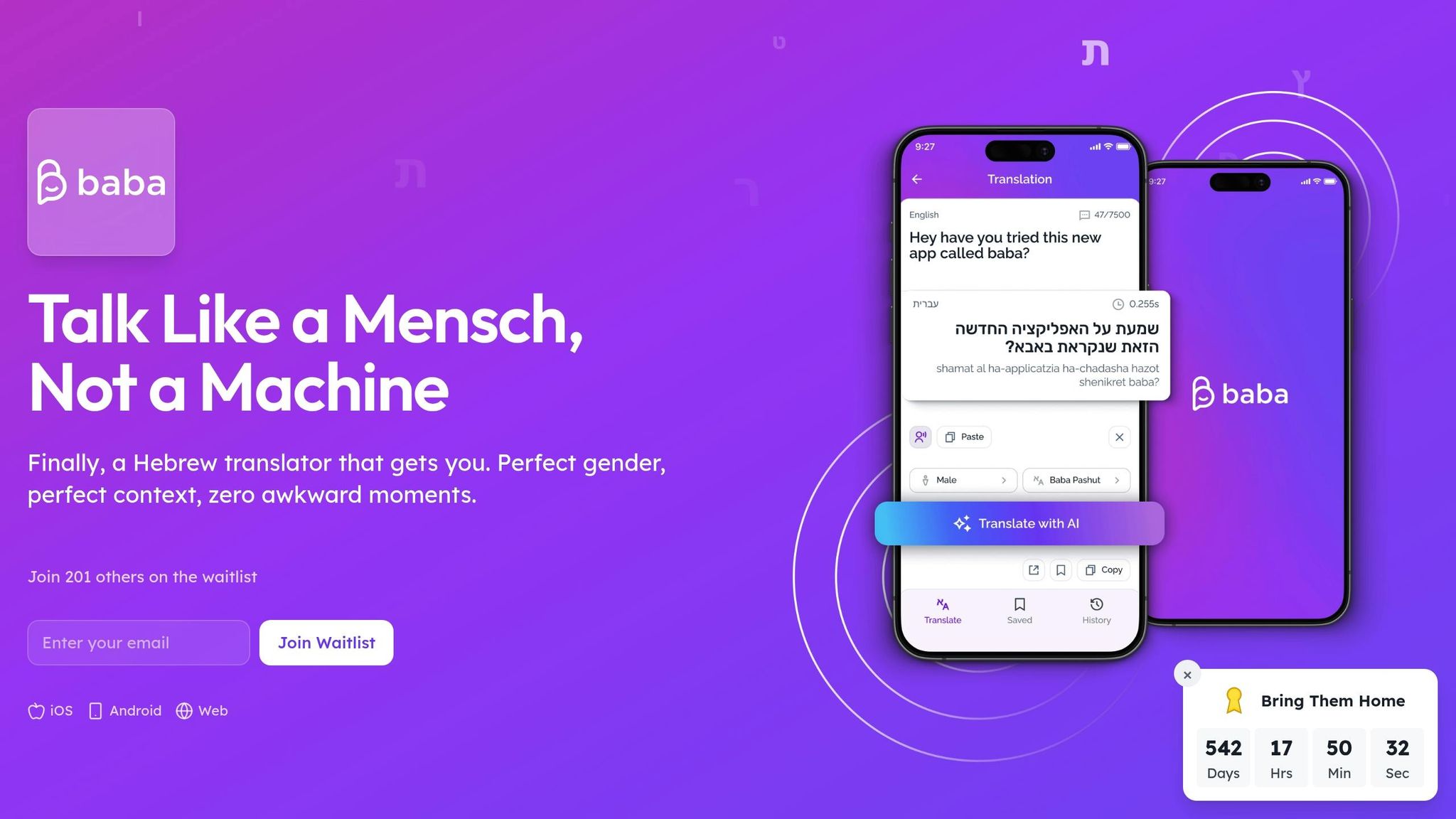
Handling the challenges of translating gendered and nuanced expressions, baba's translation tools provide context-aware results that feel natural and accurate. By addressing these complexities, baba incorporates gender, context, and cultural subtleties into its features.
Gender and Context System
baba carefully considers the relationship between the speaker and the listener by analyzing:
- Speaker Recognition: Identifies the speaker's gender to apply the correct verb forms and adjectives.
- Addressee Analysis: Determines the gender of the person being addressed.
- Relationship Context: Evaluates the connection between the speaker and listener to adjust tone and intensity.
For example, when translating the Hebrew phrase "אני מתגעגע/ת אליך" ("I miss you"), baba customizes the verb form and emotional tone based on the genders and relationship dynamic of the speaker and listener. This real-time context integration ensures translations preserve emotional depth while respecting Hebrew's gendered language rules.
Hebrew Context Integration
baba also fine-tunes translations by identifying key emotional and contextual markers in Hebrew, such as:
- Recognizing Hebrew-specific elements like word repetition or emphatic particles to convey emotional intensity.
- Adjusting translations based on:
- Time of day: Tailoring greetings for morning or evening.
- Social setting: Differentiating between formal and informal situations.
- Age dynamics: Adapting tone for elder-to-younger or younger-to-elder interactions.
These features allow for smoother, more heartfelt communication, ensuring that emotional expressions feel genuine and retain their intended meaning across languages.
Get on the waitlist for our mobile app at www.itsbaba.com
Next Steps in Hebrew AI Translation
The future of Hebrew AI translation is set to improve in areas like contextual understanding, multimodal integration, real-time updates, and incorporating cultural elements. Here’s a closer look at what’s coming:
Improved Contextual Understanding
AI will get better at interpreting subtle emotions in Hebrew by focusing on:
- Variations in tone within written text
- Cultural subtleties
- Differences in regional dialects
- Adjusting language for different age groups
Multimodal Integration
AI will combine data from various sources like voice, video, and text to improve translations. This will include:
- Analyzing voice patterns to detect emotions
- Recognizing facial expressions during video calls
- Understanding text formatting and emoji usage
- Factoring in social context
Real-time Updates
Translation tools will adapt quickly to changes in the language by:
- Continuously refining emotional databases
- Learning from user feedback and corrections
- Keeping up with new slang and modern expressions
- Updating how context is recognized
Cultural Understanding
Advanced models will better handle cultural aspects by:
- Including greetings and sentiments specific to holidays
- Recognizing religious and traditional meanings
- Understanding generational language differences
- Interpreting humor and irony within the right context
With these advancements, AI will be able to preserve the emotional depth of Hebrew, making cross-cultural communication more precise and meaningful. Maintaining the language’s cultural and emotional richness will remain a top priority.
Get on the waitlist for our mobile app at www.itsbaba.com
Conclusion
AI has made strides in understanding the emotional nuances, gender distinctions, and subtle cultural cues embedded in Hebrew. It now captures how emotions in Hebrew are closely tied to the language’s grammar and cultural roots.
These systems can perform advanced sentiment analysis and interpret context-specific expressions while staying true to Hebrew's essence. This progress has paved the way for improved translation tools like baba.
Modern solutions like baba incorporate smart gender detection and context awareness, ensuring emotional expressions are conveyed accurately across languages. These tools help preserve the original intent and tone of conversations.
As AI continues to evolve, translation of Hebrew emotions will become even more precise, offering better support for both casual chats and professional exchanges.
Get on the waitlist for our mobile app at www.itsbaba.com


